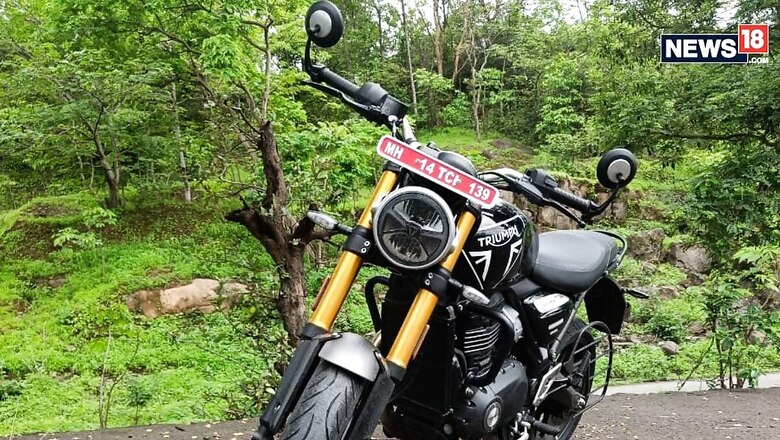
views
I rode the Triumph Speed 400 recently in the outskirts of Pune for 70 odd km. It was nothing short of an exhilarating motorcycle.
Introduction to Triumph Speed 400
It was nearly three and a half years back in Jan 2020, before COVID-19 wrecked a havoc in our lives, when Bajaj Auto and Triumph Motorcycles – two ideologically opposite brands – forged an alliance to co-develop mid-sized motorcycles for the Indian market. There was a massive hullabaloo in sections of media as to how these two companies will get together as Bajaj is quite popular among masses for its budget-friendly bikes while on the other hand, the UK-based Triumph is globally renowned for making some of the finest premium bikes.
Fast forward to June 27, 2023 – it was the day when Bajaj-Triumph unveiled the first two co-developed motorcycles in London out of the many that are slated to launch in the coming years. A week later, these motorcycles, named as Triumph Speed 400 and Triumph Scrambler 400 X, made their way to the Indian shores. The former was a roadster aimed at the dominance of Royal Enfield in the mid-sized (350-450cc) motorcycle segment in India while the latter was a Scrambler, yet again, created to disrupt the segment and usurp the segment leader, i.e. Royal Enfield.
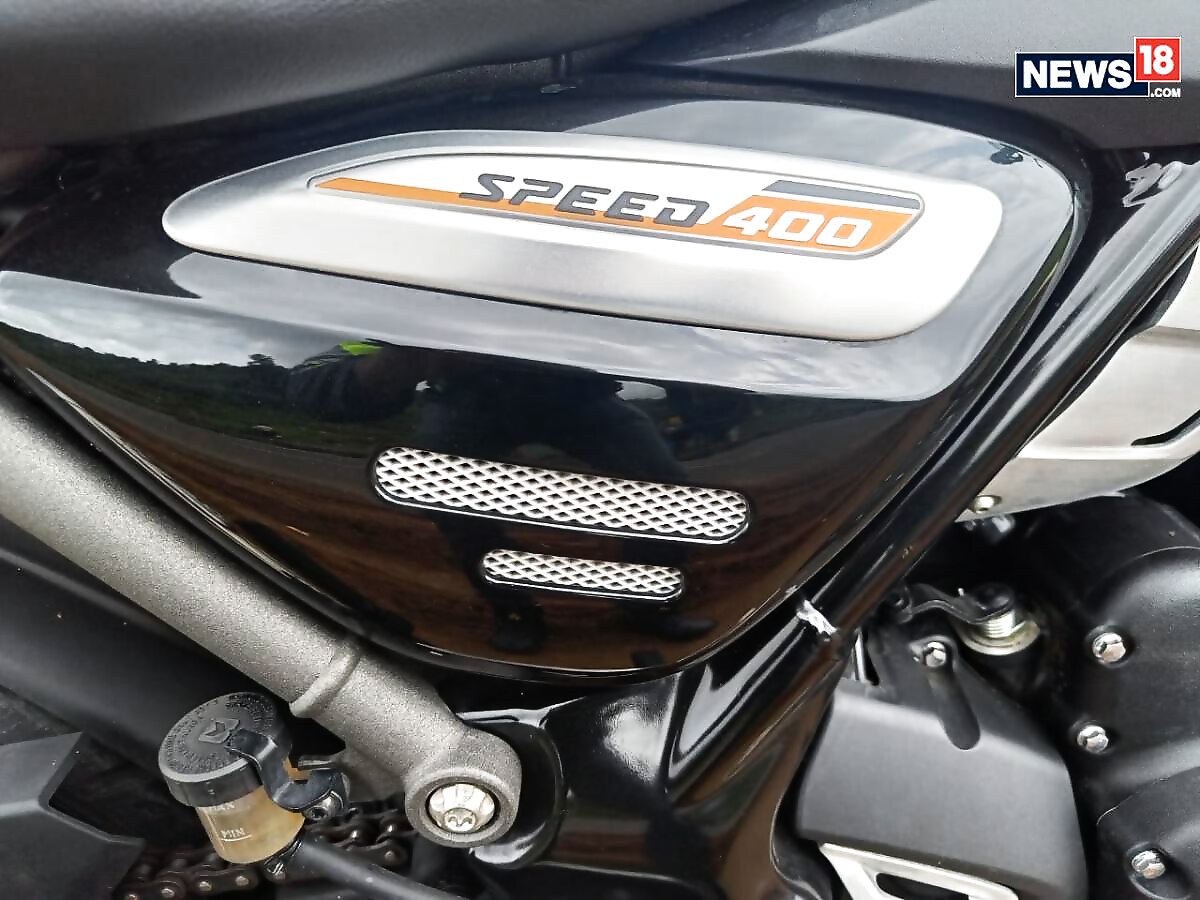
First things first, the Speed 400 will go on sale from July end onwards while the Scrambler 400X will reach the dealerships during the festive season of Diwali around the end of October. The duo will be locally manufactured at Bajaj’s Chakan facility in Pune with exports to various global markets planned as well, albeit at a later stage. However, the Speed 400 & Scrambler 400 X have been conceived and designed in Hinckley, UK. The bookings for both the motorcycles have already begun at a token payment of Rs 2000/- in the domestic market.
Bajaj has already had its share of partnerships and alliances with foreign bike manufacturers. It was not a long time back, when Bajaj-Kawasaki motorcycles used to race past people on the Indian roads. Later, it owned a certain share in the Austria-based KTM and took on the responsibility of production and distribution of its bikes. However, presently, KTM bikes are sold via its own network of independent showrooms. But as far as Triumph is concerned, it was a one-off thing for the British brand to form a partnership with an Indian motorcycling brand, co-develop bikes and sell them on its own. Hence, as you can clearly see, the forging of alliance wasn’t as easy as it appears with several question marks and doubts. But that is for another story on another day as here I will strictly stick to Triumph Speed 400.
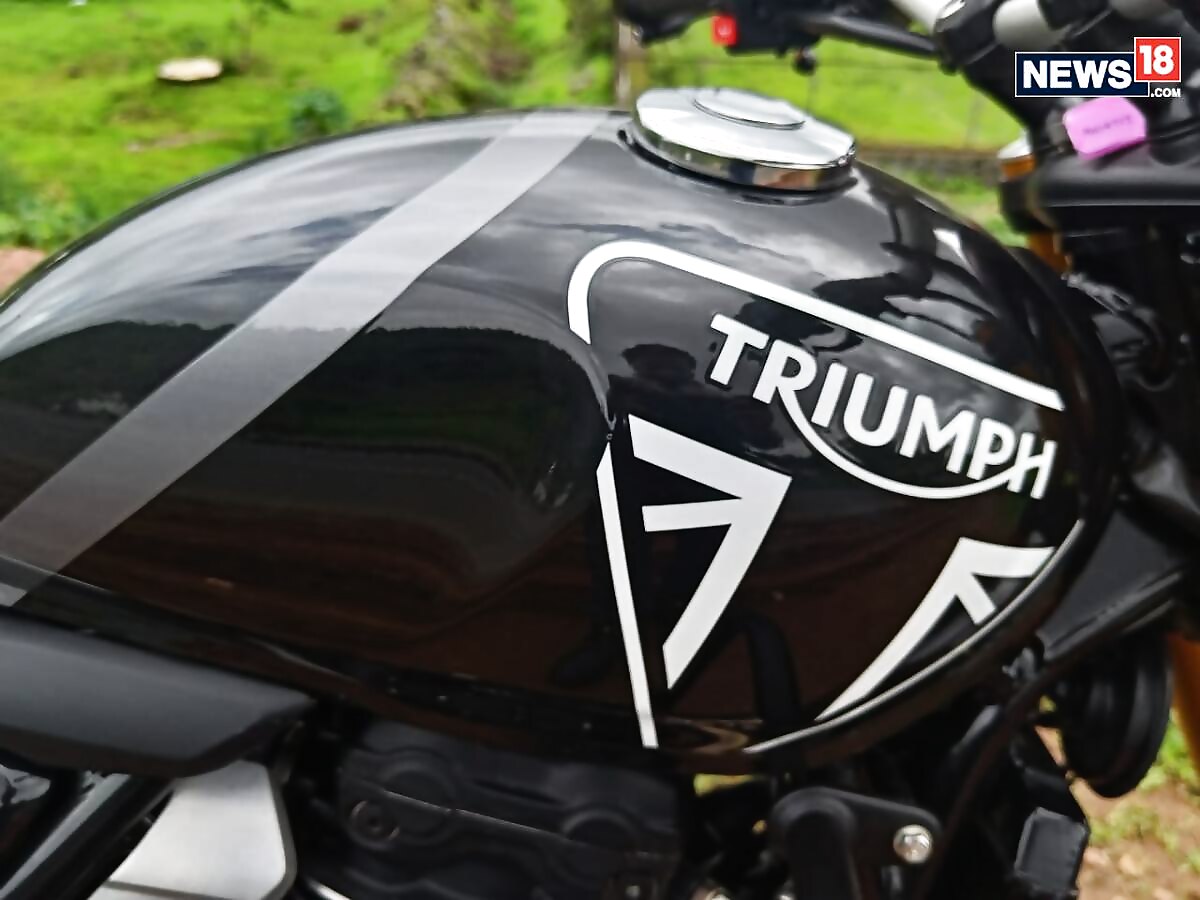
The biggest question that remains unanswered is how does the first locally built Triumph performs on the road? Does it have the vivacity and gutso to challenge the dominance of Royal Enfield who has been ruling this territory unfazed and nonchalantly for several years now. Lets figure it out in this detailed review of the Triumph Speed 400.
Triumph Speed 400 Insights, Specs, and Performance Details:
Ride and Handling of Triumph Speed 400
Before heading out on the public roads, I took the Triumph Speed 400 for a few laps at the test track in the premises of the Bajaj factory in Chakan. The ride quality was impeccable even on the sharp corners and turns due to the lightweight character of the motorcycle. For the unversed, it weighs merely 176 kg which is roughly 15-20 kg lighter than its arch rivals. The bike was fairly stable and agile most of the times, courtesy a brand-new single-engine platform which is ably aided by the new frame in chassis set-up.
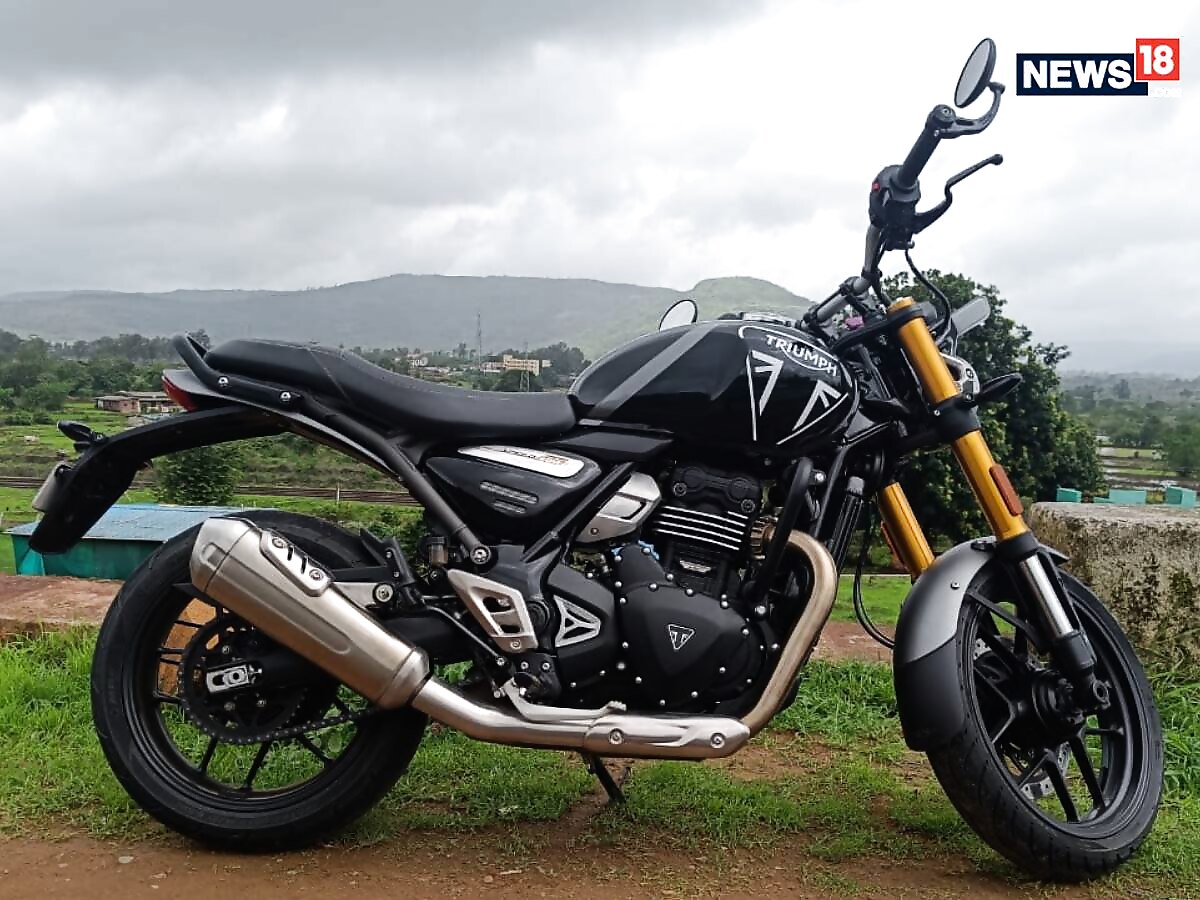
Coming to the saddle (seat) height, it is pegged at 790 mm which is even better for riders with short height such as 5’1″ and 5’2″. The shorter seat height ensures that small-heighted people can ground their feet comfortably while sitting and riding. As far as the seat comfort is concerned, it is top-notch. I rode it close to 70 km and there was not a single sign of fatigue due to the premium quality and cushioning of the single-seat setup. The upright positioning of the handle bar further helped in accentuating the ride quality.
Talking about the suspension set-up, Triumph Speed 400 boasts of 140 mm USD forks at front and 130 mm mono-shocks at the rear. The golden-colored up-side down front suspension has been sourced from Pune-based brand Endurance and it doesn’t disappoint. During the entire duration of the ride, I encountered some rough patches in the middle with potholes and speed breakers, but the duo comfortably absorbed them all. The rider feels minimum impact as the suspension units are pretty stiff. It was one area where I was not much confident and again, Triumph emerged triumphant here as well!
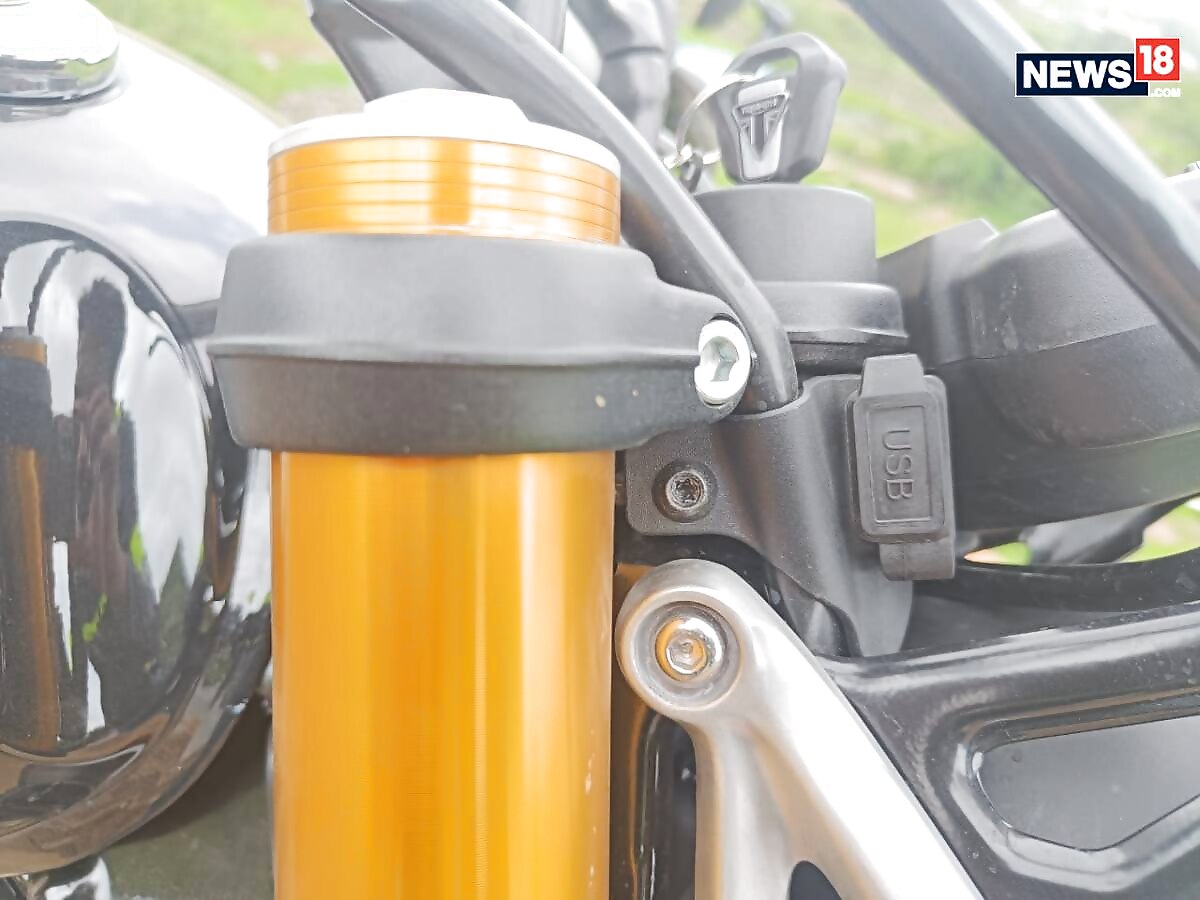
If we talk about tyres, as they are hugely responsible for an optimum ride quality, the Speed 400 can be availed with MRF Steel Brace and the Apollo Alpha H1. Both these tyres – with a ‘W’ speed rating – would be randomly fitted in the bikes. However, if we compare it with the global-spec model, unveiled in London, there is a big difference as it rides on the premium Metzeler Sportec M9RR and the Pirelli Diablo Rosso 3. It is easy to understand than say directly that Triumph made this move for cost-cutting, and subsequently targeting an aggressive price. Nevertheless, MRF and Apollo tyres are satisfactory with decent grip but not as effective and grippy as the ones on the global-spec model.
Last but certainly not the least, Triumph Speed 400 gets one of the best braking systems that I have seen in the modern bikes launching in the Indian market in the last couple of years. Equipped with 300 mm four-piston radial disc unit at front and 230 mm disc at the rear, it has possibly the shortest braking distance among its foes. During sudden braking multiple times at speeds well above the three digits mark, the bike stopped instantly and it never felt like skidding or losing balance. A big credit goes to the dual-channel Anti-lock Braking System from Bosch which works exceptionally well in tandem with the brakes. However, it is not a switchable unit which I am sure no one would even care about.
Performance and Specs of Triumph Speed 400
Triumph Speed 400 is powered by an all-new 398cc single-cylinder fuel-injected liquid-cooled petrol engine which shares no resemblance with any KTM or Bajaj powertrain produced before. This 4-valve engine has been built from the scratch and it delivers top power of 39.5 bhp at 8,000 rpm & highest torque of 37.5 Nm at 6,500 rpm. The engine gets new block and crank cases, which adds to its sublime and refined performance. It has the best-in-segment power-to-weight and torque-to-weight ratio which is quite evident from the performance that you get on the road. It is equally capable on the roads as on the papers.
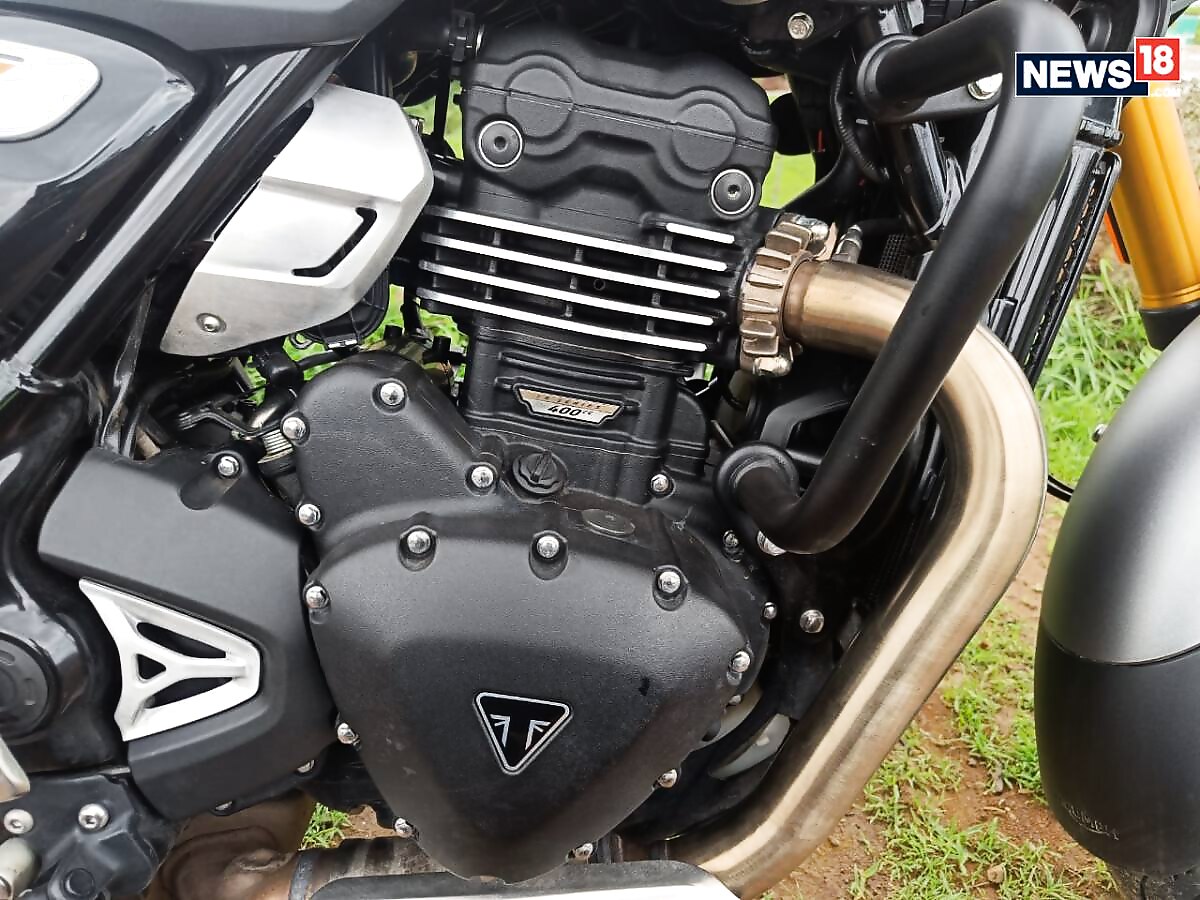
The Bajaj-Triumph officials, in the media briefing, stated that this bike does a 0-60kmph in less than 3 seconds and a 0-100kmph sprint in merely 7 seconds. And, they were mighty correct as this pocket rocket flies so effortlessly on the roads. The acceleration is way too brisk and the best thing is that you don’t feel any vibrations or noises at speeds around 120-125 kmph, when wearing a proper riding gear. The claimed top speed of the Speed 400 is 145 kmph. However, you can go past 160kmph mark as well if you are lighter in weight. I clocked 151 kmph at the speedometer and my weight is around 69 kg. Now, you can well calculate how brisk this baby Triumph roadster is. Though, you will certainly feel subtle vibrations around the foot pegs and handle bar at speeds above 150 kmph.
Triumph Speed 400 carries a 6-speed gearbox along with a slipper clutch which are again exemplary works of engineering. The gear shuffling is minimal as the 3rd gear tops out at 90 kmph. Moreover, at the low revs, the 3rd gear can be engaged as well and the bike doesn’t behave uncharacteristically. The gearshift is smooth and you don’t require much efforts here. The gear ratios are longer which help the rider in an uninterrupted ride.
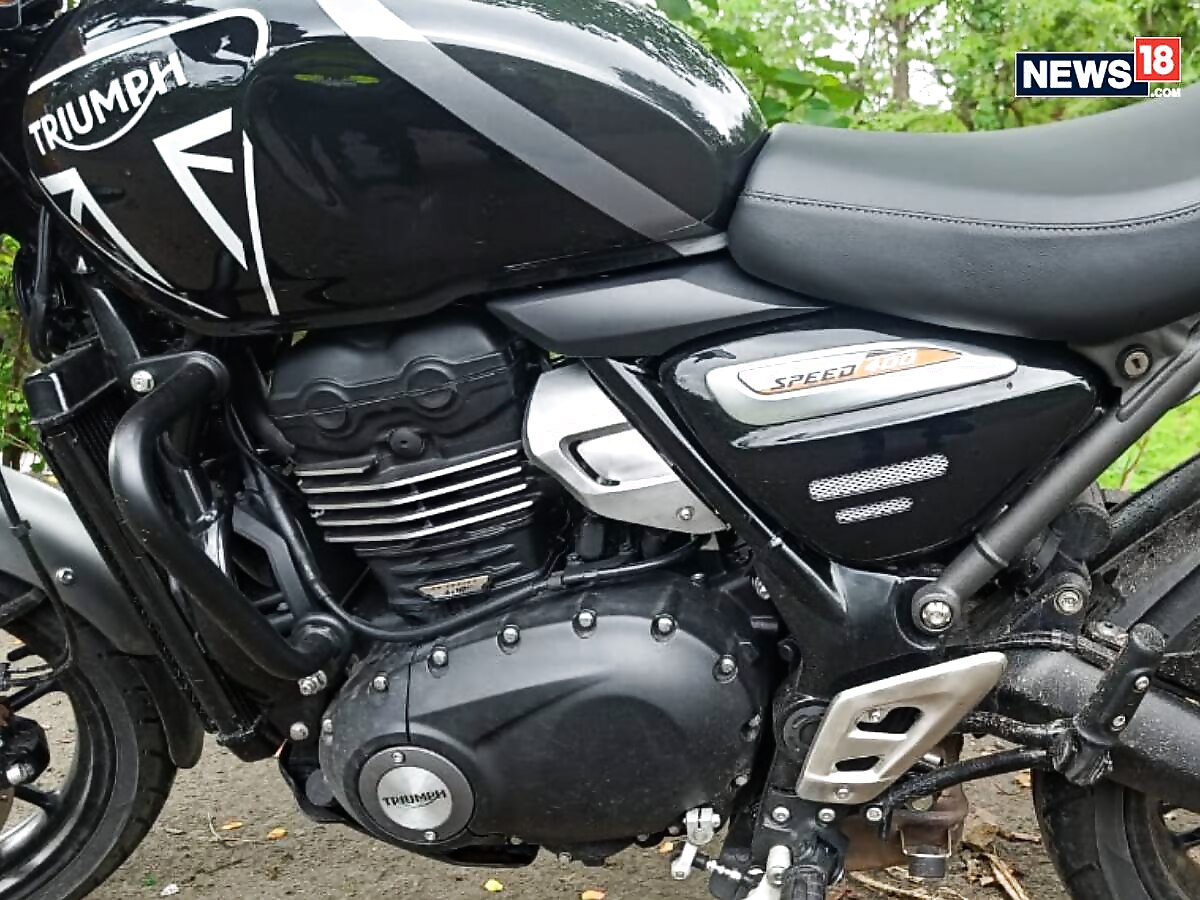
The engineering and product team at Triumph revealed an indicative mileage figure of 29 kmpl for the Speed 400. However, during the ride, I obtained a fuel economy of somewhere between 33-35 kmpl which is impressive. The bike has a fuel tank capacity of 13 litres, so in one go, without the need of refilling, you can easily ride for 300+kms, or say a Delhi-Jaipur/Delhi-Chandigarh commute is easily possible.
Design and Features of Triumph Speed 400
Triumph Speed 400 takes styling cues from the brand’s bigger motorcycles in the modern classic line-up such as the Twin 900 and 1200. Flaunting the iconic Triumph silhouettes and signature sculpted fuel tanks, the Speed 400 is a head-turned, or at least I think so. The front fascia appears quite dominating with the round headlamp with the Triumph signature DRL, golden-colored USD forks and the number plate placed above the headlight.
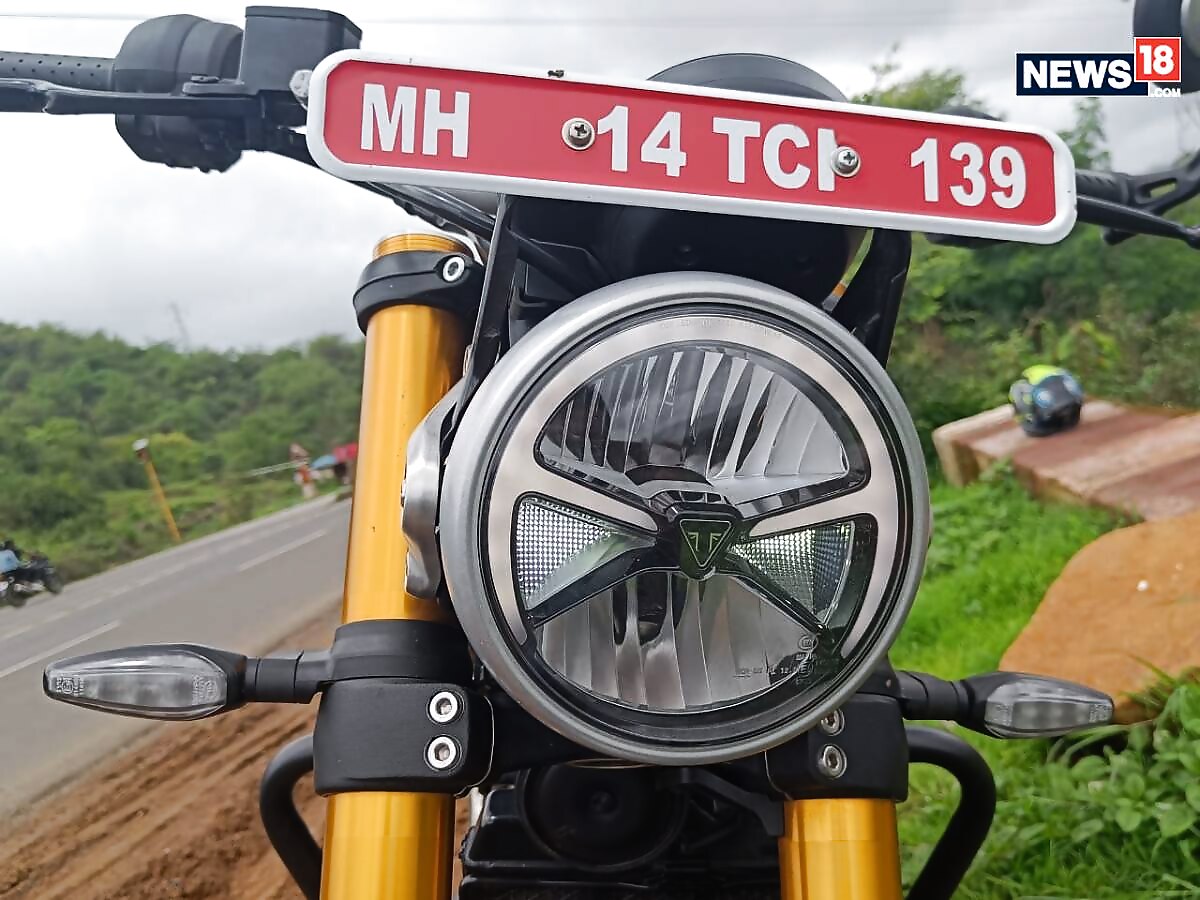
The upswept silencer strikes a sweet chord and the exhaust note is rather soothing to ears. The bold graphics at multiple places on the motorcycle make it look even more premium and tempting. The Speed 400 can be availed in three paint shades in the form of Carnival Red, Caspian Blue and Phantom Black. If you are up against the mighty Royal Enfield, you got to have at least 10 color shades, if not more. So, here I believe the company should work and introduce a few more paint options in the near future.
I rode the Phantom Black-colored Speed 400 and I strongly believe that it is the best looking color out of the whole range. However, looks are always subjective, so to each its own.
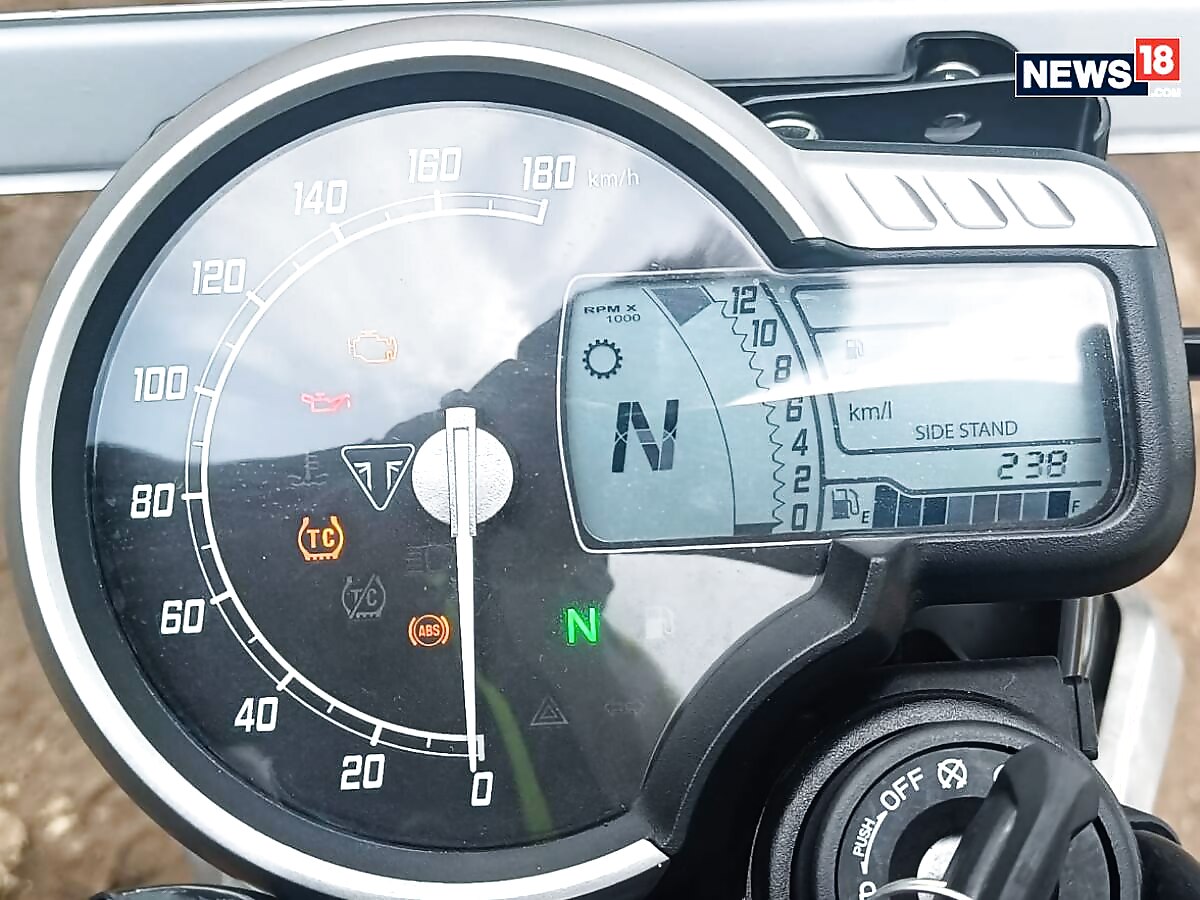
The Speed 400 is fitted with multiple striking, advanced and up-market features in the form of Ride-by-wire throttle, Sitchable Traction Control, Anti-theft immobiliser and USB-C charging socket. The instrument cluster is offered in semi-digital format with an anaogue speedometer and integrated LCD screen which houses a digital tachometer. In addition, you see fuel range remaining and prominent gear indicator. It is easy and simple to read the information from here. However, turn-by-turn navigation is a big miss and we hope that Triumph will introduce it at a later stage with the facelifted version, perhaps or in a limited-edition model.
Pros and Cons of the Triumph Speed 400
Pros:
Incredible Performance
Avant-garde Ride & Handling
Cons:
Navigation missing
Less Color Options
Triumph Speed 400 Review: Verdict
The Speed 400 has a service interval of 16,000 kms which further adds to the joy of a customer as it won’t require you to take it to the workshop very often. Furthermore, Triumph has rolled out multiple accessories with the motorcycle for individualisation and personalization as per the taste of a buyer.
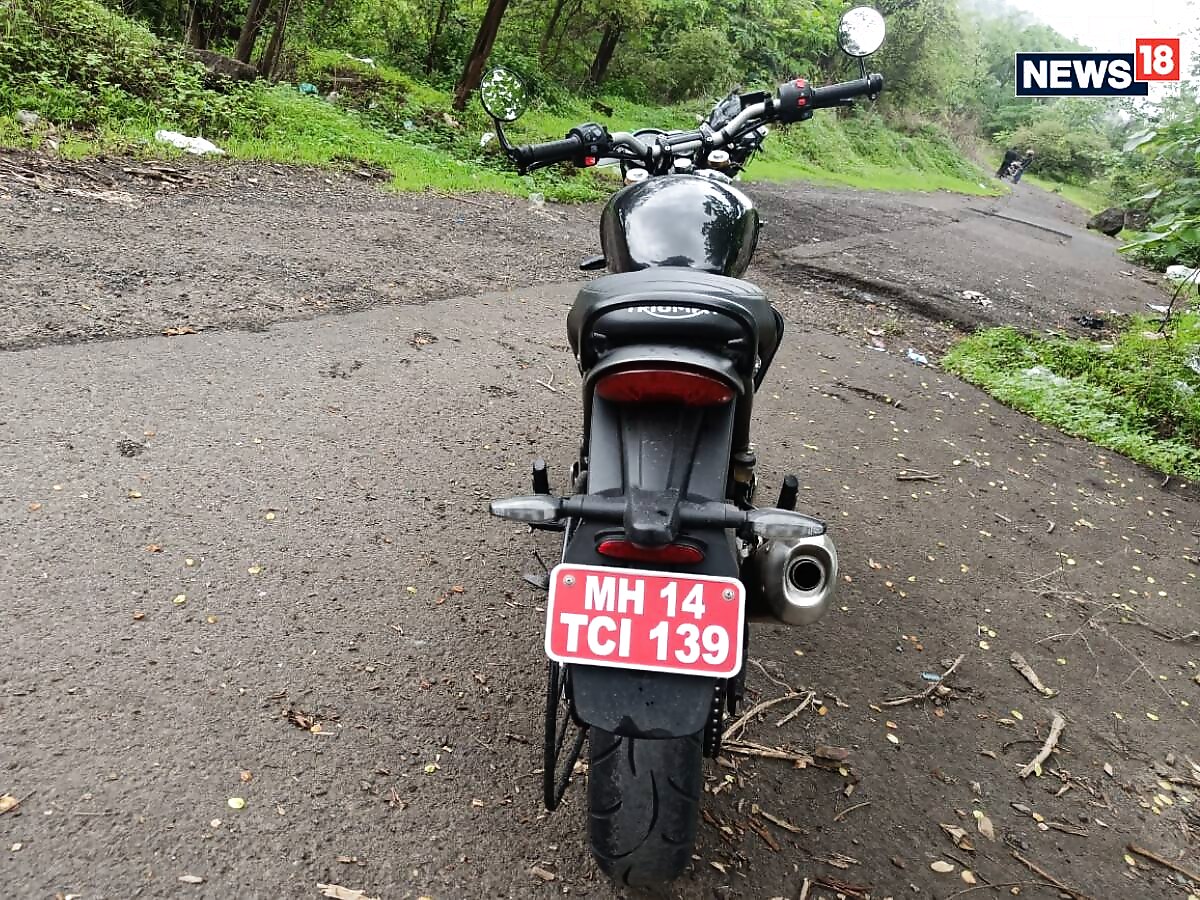
Triumph Speed 400 has been launched at an astonishing price of Rs 2.33 lakh (ex-showroom, Delhi) in the Indian market. And, if you’re lucky enough to be among the first 10,000 customers, you further get a waiver of Rs 10k. However, does these 10,000 bucks really matter? I would say no, as this motorcycle is revelation in itself. For the very first time, I am witnessing a real challenger to the supremacy of Royal Enfield which is as competent, worthy and capable. Triumph Speed 400 is probably the best product launched this year in the 2-wheeler segment in the Indian market. Get one today, and thank me later!

















Comments
0 comment